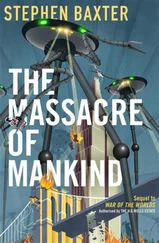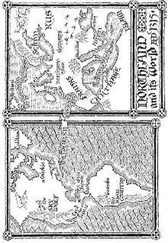Maybe she deserved to soak up the hard rain, for her stupidity. Not Jack, though. Not Jack.
She watched him while he slept, inspected him too. She didn’t want to voice her concerns, for fear of frightening him — or perhaps, she thought, for superstition, as if the evil when uttered might become real.
At last the jet surged down the runway, and Jane glanced out at the tarmac, sliding off beneath the wing. The take-off run was unusually long, she thought. Something to do with the heat of the air, probably. The plane lifted, and banked right before settling on its airway, its invisible track across the sky.
When they were airborne, Jack asked to be taken up to the cockpit; a smiling stewardess complied. When he was gone — out of her sight for the first time in days — Jane closed her eyes. She felt safe here, in the hands of professionals; she felt she could relax.
She sank into the seat, and a small chorus of aches rose from her body…
She slept for a while.
There was a flash, visible even through her closed eyelids, coming from the window to her right. Lightning. She turned and watched absently. There it was again. Roiling black clouds, too distant to be any threat.
Jack wasn’t here, presumably still up in the cockpit.
There was hazy cloud outside the window now.
Sparks flashed across her window, miniature forks, like scale model lightning bolts. St Elmo’s Fire, she thought, discharges from an electrically charged cloud.
She leaned in her seat so she could look forward to the wing.
The whole of the wing was enveloped in a cold glow. St Elmo flashes broke out across the metal, and flecks of light streamed beneath the leading edge like tracer bullets.
She could smell ozone. Puffs of smoke, of some kind, were seeping out of the air conditioning nozzles above her.
The seat belt light came on with a soft chime.
“Jesus,” somebody said. “Look at the engines.”
Jane looked.
The two engines on the wing were illuminated from within, as if by a magnesium flare. Shafts of lights shone forward, like searchlight beams, flickering as the fans turned and strobed the light.
One engine flared more brightly. There was a brief impression of the strobing reducing in pace. Then the electrical fire-light died.
The plane tipped to the right, subtly.
“Jesus…”
There was a thumping noise. The other engines were surging. Dying.
Acrid smoke was curling across the cabin floor. The cabin lights had dimmed, but bright electrical light was shining in through the windows; it was as if the whole wing had caught fire.
The sounds of subdued distress had been replaced by a chatter of concern.
But under the chatter, Jane could detect an eerie silence.
No engine noise. All four must have gone.
And now, beyond the wing, she could see a cloud, an ash tower that looked as if it was reaching to the sky, black and shot through with lightning.
She stood up. A stewardess came to force her down again, but Jane insisted. “Get me to the flight deck. My son’s there.” The stewardess led the way.
The Soyuz was shaped like a pepper-pot. Its main body was a squat cylinder called the instrument-assembly module, which housed fuel tanks, oxygen, water supplies, ancillary equipment, and the big retro-rocket that would, in a normal flight, be used to return them from low orbit to the Earth. On top of this sat the descent module, a dome-shaped tent of metal, where Henry would sit to ride to orbit. And over this was fixed a bulbous misshapen sphere called the orbital module, with equipment for operations on orbit.
The Soyuz had been designed, all those years ago, as the core of a system that should have taken Soviets to the Moon. It had never gotten that far. Instead the Soyuz had become an orbital ferry, carrying cosmonauts to three generations of space stations: the old half-military Salyuts, the Mir, and now the International Space Station. When it was time to return to Earth, the orbital compartment and the service module would be cast off to burn up, and only the descent module would reenter and parachute to the land, somewhere in the echoing heart of Asia.
The descent module was unbelievably cramped, even compared to the Apollos he’d seen in museums. It was just a crude stretched hemisphere of thick metal, so small your legs would be jammed up against the next guy’s, and it was impossible to straighten them out.
The ship’s main controls were here. But there was a disturbingly small number of instruments fixed to the walls. Some of them had even been hand-lettered with Cyrillic characters, or fixed on top of other components. The windows were small, circular and featured big heavy panes of glass and rings of bolts, like portholes from Captain Nemo’s Nautilus. But he could see no daylight through the windows right now; that big white faring saw to that.
Geena struggled out of her seat, and pulled closed the hatch in the roof. Soon after, Henry heard a muffled thud, as the techs shut the outer hatch.
And so he was sealed up in the ultimate enclosure: a cell within which he couldn’t even stand up, and yet which would carry him away from the Earth.
He searched for some reflection of this in Geena’s eyes. But there was none; Geena’s expression was cloudy, distracted. After a couple of seconds she turned back to her checklist, and worked through instrument settings, exchanging messages with the crisp Russian voices of the ground control in their bunker.
Jane understood the problem. In the last couple of weeks she’d heard about other planes which had run into this difficulty. But knowing didn’t help; she knew, in fact, that the outlook for their survival wasn’t good.
The volcanic debris, silicate ash suspended in the air, fused when it came into contact with the hot metal of an aeroplane’s combustion chambers and turbines. It was like damping a fire with sand. Engines just flamed out.
Through the windows she could see how the hot grit had sandblasted the 747’s leading edges. The paint was stripped, the windscreen and landing light covers opaqued. The dust got into the aircraft’s pitot tubes — airspeed sensors — and caused conflicting information on the flight deck. The engine nacelles, intakes and fans looked as if they had been shot-blasted.
The crew allowed Jane onto the deck — Jack was here, wide-eyed — but they barely reacted to her presence.
The cabin was filled with a bluish, acrid mist, sucked in by the compressors before the engines died. There was only grey cloud ahead of the aircraft, dancing electric light on the windscreen.
The Crew were following their procedures, the drill Jane recognized as preparing for an in-flight start-up of the engines.
They all looked incredibly young.
“…Mayday, mayday, mayday. Our position is forty miles west of Glasgow. We have lost all four engines. We’re descending and we’re out of level 370.”
Prestwick here, have you got a problem?
“We’ve lost all four engines.”
Understand you have lost engine number four?
The Senior First Officer — a thin, nervous young man — groaned at his captain, a competent fifty-ish woman. “The fuckwit doesn’t understand.”
Jack’s eyes got rounder.
“Then tell her until she bloody does,” the captain said. “Tell her we want radar assistance to get back to Prestwick. What about number four?”
“Fully shut down.”
“All right.” The captain checked the position of that engine’s fire handle and thrust lever. “We’ll go for a restart. Begin the checklist.”
The crew struggled through their checklists and drills — start levers to cut-off, standby ignition on, start levers back to idle — and Jane felt for them, forcing themselves through their complex procedures, mastering their own fear.
Читать дальше
Конец ознакомительного отрывка
Купить книгу












